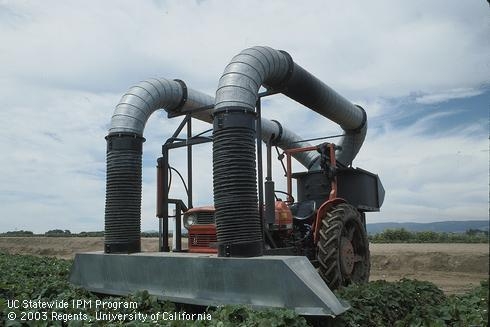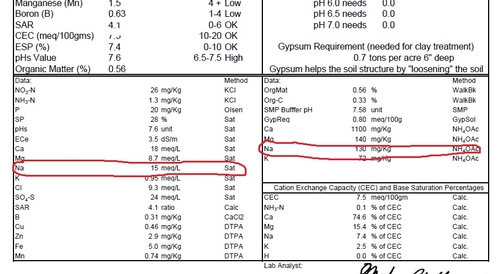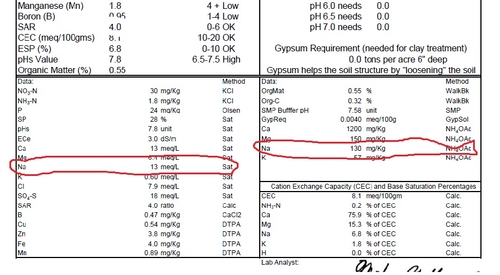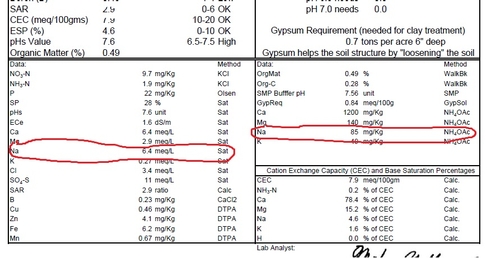Strawberries
Giant Lygus Bug Vac
I saw this photo in the UC IPM archives. Since it is a really unusual configuration and the fact that lately bug-vacs have become a bigger part of the lygus management discussion again, I thought this might be something to share with my readers.
To find out more, I contacted Thom Flewell, who wrote this in response:
"I used to have 3 bug vacs with that general configuration. The fans were from plastics manufacturing and were used to move the pellets that formed the feed stock for producing plastics. Mike McCluney made many Bug Vacs using these fans, usually with one fan per bed. They were very heavy, and demanded about 17 horse power per fan. The tractors had barely enough power to operate the fans and move the machinery down the rows. There were two disadvantages with these machines. The size of the fans required mounting them off the back of the tractor. The aspirator head had to be placed forward of the tractor to keep from scaring the lygus and causing them to drop below the effective suction zone of the machine. The problem was with the distance that separated the head and the fan. Vacuum was reduced significantly along the travel from the head to the fan. The second problem was the weight of the machines. It was not uncommon to have a driver let his attention wander and the tractor then wandered too, going from the hard-packed furrow to the soft and soggy bed. When the wheels left the furrow and sunk in the beds, destruction followed and pulling the tractor back up onto the furrow was like trying to pull it from a swamp onto a railroad track.
The greatest advantage to these fans was that nothing that enter the volute exited alive. The fan employed flat impeller blades accounting for their inefficiency. But that same inefficiency meant that air and anything entrained in the air flow probably collided either with the blades or the side of the fan before exiting. Only parts remained. "
Thanks Thom!

Picture of giant bug vac used used some years ago in strawberries.
Understanding Plant Salt Tolerance in Gypsiferous Soils
For those of you who attended Steve Grattan's presentation at UCCE Monterey last week on managing salinity in vegetable production, you may recall he mentioned that strawberries in gypsiferous soils can tolerate a higher EC reading than the salt tolerance guidelines allow. I wasn't quite clear about this, so I emailed about it and his answer concerning this is as follows:
"Crop salt tolerance is based on crops response to the electrical conductivity of the saturated soil paste (ECe). But in actuality, crops respond to the salinity in the soil water. These are different.
The field soil water content for many berries and vegetable crops is slightly above or below the field capacity. This means that about 1/2 of the pore volume in the soil is water and the other half is air. To make a saturated paste, distilled water (pure water without salts) is added to fill the extra pore space. Now if the salts in the soil water are largely sodium and chloride (very soluble), then the ECe would be about half the EC of the soil water in the field...which is what the crop is truly responding to. But if the soil contains a lot of gypsum (CaSO4), then by adding distilled water, more salts will become dissolved so that the ECe would be higher.
As an example, the literature indicates that strawberries can tolerate a maximum ECe of 1 dS/m, beyond which yields decline 33% for every 1 EC unit is increased beyond that. This was based on a chloride dominated water. Therefore, stawberries can tolerate about an EC of 2 in the field water. Gypsum has a maximum solubility of about 20 meq/l which is an EC of about 2 dS/m but this is just a generalization and can vary depending on soil chemistry. But for simplicity, if the salts were all gypsum (no sodium chloride) than if the soils had excess gypsum, the EC of the field water would be about 2 (no yield reduction). But to make a saturated paste, distilled water is added and more gypsum is dissolved so the resulting ECe is not 1 but remains at 2. Therefore an ECe of 2 dS/m is not growth limiting in this case.
The rule of thumb is that plants can typically tolerate a 1-2.5 dS/m higher ECe than the salt tolerance guidelines indicate in gypsiferous soils because of this relationship."
Powerpoint Presentations from 2014 Annual Strawberry Meeting Online
The powerpoint presentations from today's 2014 Annual Strawberry Meeting are now for the most part online. Thanks to all the presenters for making this such a great meeting:
http://ucanr.edu/2014_annual_strawberry_production_ppt
Understanding the Sodium Results on a Soil Analysis
I am writing this in response to the questions at yesterday's mineral nutrition meeting regarding the two different outputs on laboratory soil analyses for sodium. Pretty tough gig standing in front of about 70 of your peers and not having the answer right away, but so it goes.
The questions pertained to the difference between a reading of “exchangeable sodium” measured in parts per million (ppm) or mg/kg, and sodium measured in meq/l (milliequivalents per litre) from saturated paste. The photos below of three different soil samples tested by a local analysis provider shows the “exchangeable sodium” output in mg/kg (also read as ppm) on the right, and sodium measured in meq/L from saturated paste on the left.
Let's summarize a recent communication of mine with Dr. Tim Hartz from UC Davis in order to understand what these mean to us:
1. The extract from NH4OAc method is the "exchangeable sodium" a minority of which is considered to be ‘active' -meaning what the plant root could encounter- in the soil solution. The "exchangeable sodium percentage" (ESP) for coastal soils is around 2.5% of the base saturation on average, and one shouldn't run into trouble until this percentage of exchangeable sodium gets in the range of 7 or 8%.
2. To see what is ‘active' and what the plant root is facing, one needs to look at the saturated paste analysis which measures soluble sodium. Numbers around 3 or 4 meq/liter are good and don't indicate a problem; numbers much higher than these figures would be point to a sodium problem.
Let's go to the analyses below from some soils and practice with these numbers for exchangeable sodium and saturated paste extracts measuring soluble sodium.

Sample # 1: Saturation extract of Na measured as 15 meq/L, and the amount of 'exchangeable sodium' of 130 mg/kg (ppm) is 7.4% of the total base saturation (box at bottom right) , well above the 2.5% which is OK for coastal soils . The strawberry plants from this area of the field were dead.

Sample #2: Saturation extract of Na measured as 13 meq/L, and the amount of 'exchangeable sodium' of 130 mg/kg is 6.8% of the total base saturation (box at bottom right) , well above the 2.5% which is OK for coastal soils. The strawberry plants from this part of the field were dying.

Sample #3: Saturation extract of Na measured as 6.4 meq/L, and the amount of 'exchangeable sodium' of 85 mg/kg (ppm) is 4.6% (box at bottom right) of the base saturation; seems OK. The plants from this area of the field were apparently all right.
Link to Powerpoints of Yesterday's Presentations
Great meeting on berry mineral nutrition yesterday, thank you everybody for coming and participating.
If you missed it, or want to review what was presented, the Powerpoints are both here:

